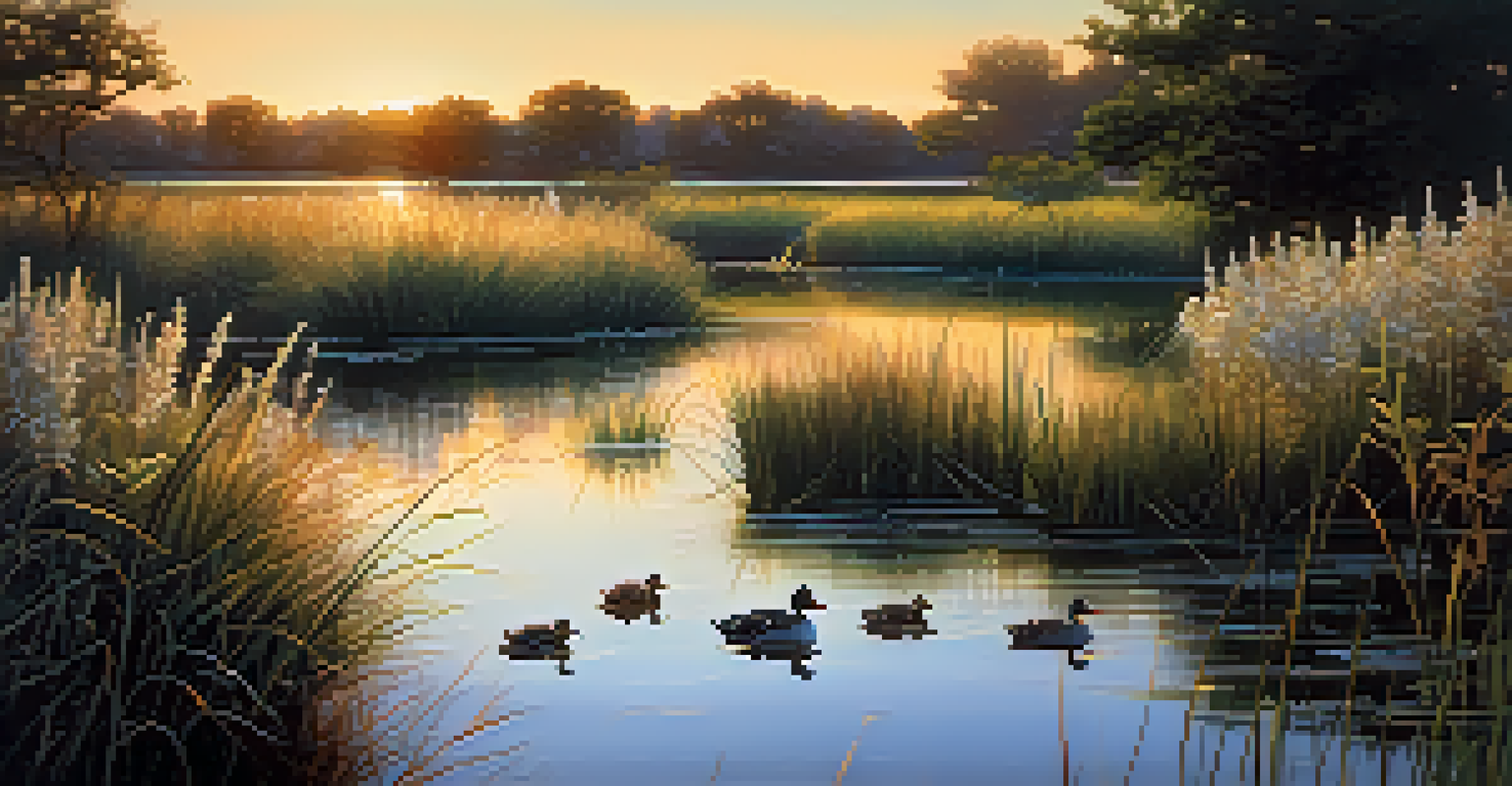The Power of Native Plants in Restoring Ecosystems and Climate

Understanding Native Plants and Their Importance
Native plants are species that have evolved in a specific region and are adapted to its climate and soil conditions. They play a crucial role in maintaining the local ecosystem by providing food and habitat for indigenous wildlife. Unlike non-native plants, native species work harmoniously within their environment, promoting biodiversity and resilience.
The native plant is one that has developed, occur naturally in a particular region, ecosystem, or habitat without direct or indirect human actions.
For instance, consider the goldenrod, a native plant that not only beautifies landscapes but also supports over 100 species of insects. This interconnectedness highlights how native plants are essential for sustaining healthy ecosystems. When we prioritize native species in landscaping and conservation efforts, we encourage a thriving environment.
Moreover, native plants require less water and fewer chemical inputs, making them a sustainable choice for gardens and public spaces. By using these plants, we can reduce our reliance on fertilizers and pesticides, which often harm local wildlife and contribute to pollution.
The Role of Native Plants in Restoring Ecosystems
Restoring ecosystems often involves reintroducing native plants, which can help rebuild habitats that have been damaged or destroyed. These plants are better suited to the local environment, making them more resilient to diseases and pests. As a result, they can thrive and help stabilize soil, prevent erosion, and manage water resources effectively.

For example, when wetlands are restored with native vegetation, they can better filter pollutants and provide critical flood protection. This restoration not only benefits wildlife but also supports human communities by enhancing water quality and reducing flood risks. The return of native flora acts like a natural remedy for ecosystems in distress.
Native Plants Boost Ecosystem Health
Native plants are crucial for sustaining local ecosystems by providing food and habitat for indigenous wildlife.
Additionally, native plants facilitate the revival of local wildlife populations by providing the specific food and shelter they need. This creates a balanced ecosystem where plants and animals coexist, thus promoting biodiversity. The health of our ecosystems hinges on these native species, which serve as the backbone of their environments.
How Native Plants Combat Climate Change
Native plants are powerful allies in the fight against climate change. They have evolved to withstand local climate conditions, making them more resilient to extreme weather events. Their deep root systems help sequester carbon and improve soil health, capturing carbon dioxide from the atmosphere and storing it underground.
In nature, nothing exists alone.
For instance, prairie grasses can store significant amounts of carbon due to their extensive root systems. By planting these natives, we not only enhance carbon storage but also mitigate the effects of climate change, such as increased flooding and drought. This connection between native plants and climate resilience is vital for sustainable land management.
Moreover, healthy ecosystems supported by native plants can better adapt to climate fluctuations. By fostering biodiversity, we create a buffer against climate impacts, ensuring that nature can continue to provide essential services, like clean air and water, even in a changing climate.
Enhancing Biodiversity with Native Plant Species
Biodiversity is the variety of life in a particular habitat, and native plants are key players in enhancing it. These plants provide essential habitats and food sources for a variety of local wildlife, from pollinators like bees to larger mammals. The presence of diverse plant species ensures a balanced ecosystem that can support complex food webs.
Take the example of a native wildflower garden: it can attract numerous pollinators, including butterflies and hummingbirds, which are critical for the reproduction of many plant species. By planting a variety of natives, we create a mosaic of habitats that supports different species and encourages ecological interactions. This diversity is vital for the resilience of ecosystems in the face of environmental changes.
Economic Benefits of Native Plants
Using native plants can lead to significant cost savings in landscaping due to reduced maintenance and irrigation needs.
Furthermore, preserving and restoring native plant communities helps combat the negative effects of invasive species, which often threaten local biodiversity. By reestablishing native flora, we can outcompete invasive plants and restore the natural balance of our ecosystems.
The Economic Benefits of Using Native Plants
Using native plants is not just an ecological decision; it also makes economic sense. Native plants are often more cost-effective in the long run because they require less maintenance, irrigation, and pest control. This can lead to significant savings for homeowners, municipalities, and organizations alike.
For instance, landscaping with native plants can lower water bills since these species are adapted to local rainfall patterns. Additionally, they can reduce the need for chemical treatments, which can be costly and harmful to the environment. This economic efficiency makes native plants an attractive option for sustainable landscaping and urban planning.
Moreover, investing in native plant restoration can boost local economies by creating jobs in conservation, landscaping, and agriculture. By prioritizing native plants, communities can contribute to environmental health while also fostering economic opportunities. It's a win-win for both nature and people.
Community Involvement in Native Plant Initiatives
Community involvement is essential for the successful implementation of native plant initiatives. Local residents can participate in planting events, educational workshops, and conservation programs, fostering a sense of ownership and responsibility for their environment. When communities come together to support native plant efforts, the impact is often amplified.
For example, community gardens that focus on native species not only beautify neighborhoods but also provide educational opportunities about local ecosystems. These initiatives encourage individuals to learn about the importance of native plants and how they contribute to biodiversity and climate resilience. Engaging communities in this way cultivates stewardship and a deeper connection to the land.
Community Engagement is Key
Active community involvement in native plant initiatives fosters stewardship and enhances local environmental health.
Additionally, collaboration between local governments, schools, and non-profit organizations can lead to broader awareness and action. By working together, communities can create more effective strategies for restoring native habitats and promoting sustainable practices. This grassroots engagement is crucial for creating lasting change.
How to Get Involved with Native Plant Conservation
Getting involved with native plant conservation is easier than you might think! Start by researching local native species and their benefits; many gardening centers offer native plants that suit your regional climate. You can begin by incorporating these plants into your garden, which not only enhances your landscape but also supports local wildlife.
Another great way to contribute is by volunteering with local conservation organizations that focus on restoring native habitats. Many groups host planting days or community events where you can help plant, maintain, or educate others about native plants. These hands-on experiences are not only rewarding but also provide valuable knowledge about local ecosystems.

Lastly, consider advocating for native plant initiatives in your community. Whether through social media, local government meetings, or community events, raising awareness about the benefits of native plants can inspire others to get involved. Your voice can be a powerful tool in promoting sustainable practices and enhancing the health of local ecosystems.